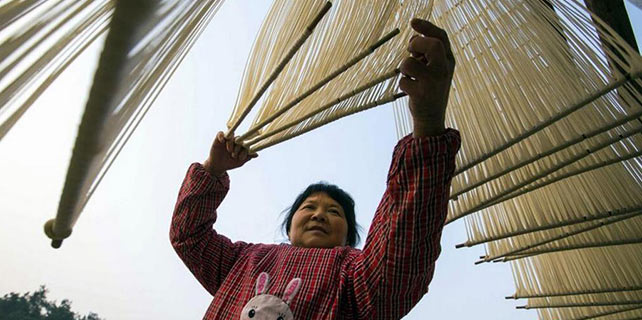Public funding to assist designers
A project launched by the ministries of culture and finance in 2014 will continue to support and train talented designers, especially those from China's western cities, officials of the Ministry of Culture said on Thursday.
A special fund from the central government will continue to assist the project to train talented designers, finance their attendance of cultural fairs and expos, and offer them opportunities to design for museums and related industries, says Song Qihui, a senior official of the Ministry of Culture.
This year, the project will shift its focus from designers in big cities to those from underdeveloped areas in the country's west, especially places that are home to different ethnic groups, such as the Tibetan and the Yi people in the provinces of Sichuan, Guizhou and Yunnan, where tourism is also flourishing.
The project has financed more than 1,400 designers since it was launched three years ago, with more than 7 million yuan ($1.01 million) invested in products they've designed, says Zhou Qingfu, head of the Central Academy of Cultural Administration, a central body, which manages the project.
"Designers applying to join the project are mainly from Beijing, Shanghai, Shenzhen and rich provinces like Zhejiang and Jiangsu. We receive very few applications from those in western China," says Zhou.
About half of the designers are 25 to 35 years old. Many work for museums, which have a large demand for talented designers and are being encouraged by the government to develop creative products based on their collections.
Yan Ligang, a designer who has received funding from the project, found opportunities to design art items for the Palace Museum in Beijing and the Dunhuang Museum in Gansu province, which is famous for its Buddhist grottoes.
His design of a cat living in the Forbidden City was well received when it appeared on products like cellphone cases, T-shirts, fans, emojis and a virtual-reality game.
Yan says there are lots of good designers in China. But the difficulty lies in how to find a proper platform to show their works to those who want them and, more importantly, how to link them with companies or organizations that need them.
In fact, with the cultural and creative markets prospering in recent years, many projects have emerged that support star designers. But the subjects presented by such designers have been limited to items made of material like porcelain, says Zhou.
"Many towns and ancient villages are in need of creative items to promote their history and culture, so designers have huge room to contribute their ideas," Zhou says.
The project will set specific yet practical themes for the designers, who will be selected for funding, Zhou says.









